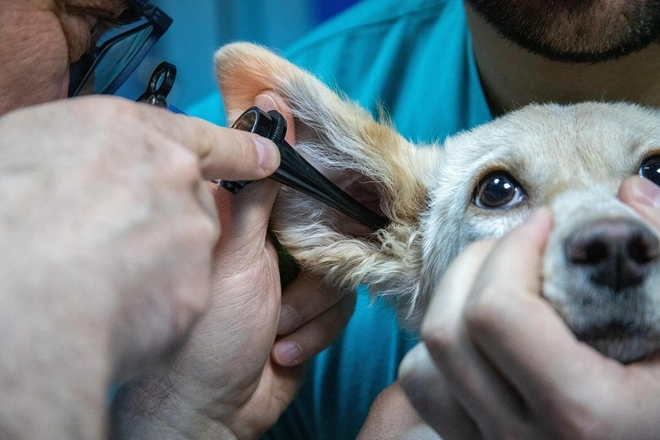For the Purrbabies


Many pet owners experience sticker shock at the cost of a vet visit. Planning for these expenses makes pet ownership more manageable.

The rising cost of vet care catches about half of all pet owners by surprise. Almost half of all pet owners aren't prepared for the bills, especially when emergencies happen.
Price increases aren’t a new trend—the cost of vet care has jumped almost 60% over the last decade. And prices continue to climb at all clinics in part due to big companies and investment firms buying vet practices.
Costs vary greatly based on the type of care you require, the specific needs of your pet, and where you live. (Use Banfield Pet Hospital’s price estimator tool to find out costs in your area.)
We have also put together the following guide with a breakdown of what you can expect to pay for standard, specialist, and emergency veterinary services.
Going to the vet means paying an office visit fee, including a routine exam and discussing your pet's signs. You'll pay extra for any treatments, medications, vaccines, or tests. While it might be tempting to skip check-ups to save money, don't do it. They help keep your pet healthy and catch problems before they become serious.
Vaccinations are an essential part of pet healthcare. The ASPCA highly recommends core vaccinations to prevent common pet diseases. Core vaccines help protect your pets against common, serious diseases. Your vet may recommend non-core vaccines for your pet depending on various factors.
Many cities require proof of the rabies vaccination for pets to be registered. The average cost of a rabies shot ranges from roughly $40 to $75. After the initial shot, which is given at various ages depending on your pet, your dog or cat will need either an annual or three-year booster, based on local ordinances. Low-cost vaccination clinics and animal shelters often charge less.
Core vaccinations for dogs protect them from a wide variety of serious illnesses. Dogs can receive the DAPP (distemper, adenovirus-2, parvovirus, parainfluenza) or DHPP vaccine. DHPP protects your dog from the same illnesses and also guards against leptospirosis. These vaccines range from $30 to $50 per dose, based on your pet’s weight. Additionally, the canine influenza vaccine costs $30 to $70 per dose in 2025. This vaccine is “non-core,” meaning it’s not essential. As dog social activities grow, such as daycare and dog parks, the risk of illnesses also increases — especially for canine influenza.
Cat vaccinations range from $125 to $250 for the initial series of three core vaccines. The FVRCP vaccine protects cats from three serious viral diseases: Feline Viral Rhinotracheitis, Calicivirus, and Panleukopenia. After this first-year vaccine series, boosters cost $40 to $150.
“There are no vaccines for parasites, though dogs can get an injectable heartworm preventive every 6 to 12 months,” says Dr. Bruce Armstrong, DVM. “There are parasiticides that will help protect cats that are given orally or applied topically.”
Dogs and cats have a range of health concerns, and often need to get labs or X-rays to determine what’s wrong. The diagnostic tests your vet recommends will depend on what symptoms your pet is showing. Sometimes, what seems like a minor issue could indicate a serious problem.
👉 Important warning signs: Don't ignore symptoms that appear innocent! Peeing outside the litter box could indicate urinary blockage in cats. Drooling in dogs might reveal abnormal tissue growth in the mouth. Limping might be a sprain or something more serious. Always consult your vet about changes in your pet's behavior.
Some health problems only require one vet visit to diagnose and set up a treatment plan. The following diagnostics are more costly.
👉These prices don’t include the cost of the vet exam, additional testing, or prescription medications. Depending on the severity of the disease, your vet visit might result in a bill over $1,000.
👉 Allergy test prices don’t cover the vet exam, extra tests, or medications, which may push your costs well into the thousands. Allergies in dogs and cats often need several visits to check if the medications are effective or if your pets need more tests.
Paying for vet care
Recent research shows that 80% of pet owners worry about the costs of treatment at specialty or emergency hospitals. Almost 50% of pet owners today don’t realize the true costs of vet care. Unexpected emergencies often contribute to this misunderstanding. Here are some ideas to cover surprise vet costs.
Putting aside a little money each month for a pet emergency fund can help pay for unexpected costs.
Visit or call a variety of veterinary practices in your area and ask for a breakdown of their fees. There can be a lot of variation in these costs based on the clinic.
Pet insurance is becoming more and more popular. According to a 2024 report by the North American Pet Health Insurance Association, the number of insured pets has risen by 22.6% each year since 2020. Most plans cost between $20 and $50 per month depending on your pet's age, breed, and coverage level. Do your research to find the plan and the insurance company that works for you.
👉 Most pet insurance companies don’t cover pre-existing conditions. Make sure you understand what that includes. Most veterinary offices require payment upfront. On top of that, most pet insurance providers make you pay 100% out of pocket, then give you a refund afterward.
Many local and national organizations offer pet financial assistance programs for everything from basic veterinary care to cancer treatment. United Spay Alliance created a spay/neuter referral directory to help you find low-cost spay/neuter options in your area. You can also consider applying for CareCredit or similar medical credit options.
Platforms like GoFundMe and Facebook help pet owners raise money for vet bills. They allow owners to share their pet's story with friends, family, and social media.
Vet telehealth costs vary. Some services offer free chat or triage. Some companies charge per visit, with fees from $20 to $150. Others provide subscription plans for unlimited access. Telehealth benefits include 24/7 access, plus you don’t have to take your dog or cat to a clinic, which is often very stressful for everyone.
Some clinics offer payment plans or might be willing to reduce costs in certain circumstances. While this shouldn't be expected, many veterinary practices understand financial hardships and want to help pets receive necessary care.
To help your pet and save money, focus on preventive care:
Many brands use fillers and low-grade ingredients, so look for healthier options. Ask your vet for recommendations, especially if your pet has special nutritional requirements.
Taking your pet to the vet before they are sick is one of the best ways to control costs. Visit your vet at least once a year for a wellness check. Also, pay attention to any changes in behavior. Don't ignore sudden vomiting, sneezing, coughing, or excessive itching.
Regular exercise keeps your cat and dog active. This helps prevent diseases like diabetes, obesity, and arthritis. Incorporate regular walks and games with your dog or cat into their daily routine.
Cleaning supplies, some foods, pesticides, and certain plants can be harmful. Keep your yard well-maintained and clean the house often to lower the risk of them getting sick.
Routine healthcare is your best defense against serious pet illnesses. By maintaining regular vet appointments and following prevention protocols, you significantly reduce health risks. However, accidents and unexpected diagnoses can still occur despite your best efforts. Familiarizing yourself with typical costs for these services gives you one less worry during stressful situations. A little preparation today means peace of mind and better care for your beloved pet tomorrow.
A veterinary emergency room visit costs $100-200 for the exam alone. Most emergency visits cost between $500 and $1,500 for diagnostics and treatment. But, complex cases that need surgery or hospitalization can cost much more.
A veterinary emergency room visit costs $100-200 for the exam alone. Most emergency visits cost between $500 and $1,500 for diagnostics and treatment. But, complex cases that need surgery or hospitalization can cost much more.
Check local animal shelters for free or low-cost clinics. You can also contact veterinary schools for discounted services. Call local rescue organizations for resources or apply for assistance from national organizations like RedRover Relief or The Pet Fund.
In many states, veterinarians can hold your pet until you settle your bill. Yet many vets prefer to work out payment arrangements rather than keeping animals. Discuss financial concerns with your vet before treatment begins.
A routine vet visit typically costs $50-100 just for the examination. For basic preventive care, like vaccines or parasite testing, you can expect to pay $100 to $300. Costs vary by location, clinic type, and your pet's specific needs.








